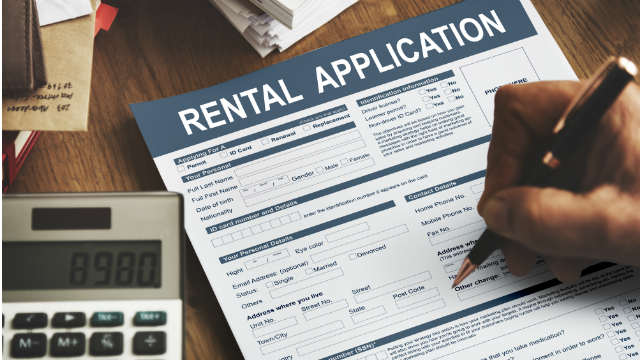Rental bonds: how do they work and what do they cover?

Before a tenant can settle into their new rental home, they will likely be asked by their landlord or property manager to pay a rental bond (or security deposit). Understanding how a rental bond works and the steps for claiming a bond refund is important for tenants to comprehend before they sign a tenancy agreement. If you are a landlord, it is also important to be aware of your obligations when it comes to taking a bond and the rules around claiming on a bond if issues arise.
Here is our breakdown of the ins and out of rental bonds in Australia for tenants and landlords.
What is a rental bond?
A rental bond (also called a security deposit) is a payment that tenants are required to make to a landlord or property manager, or to a rental bond authority directly, when signing up to lease a new rental property. It acts as a form of protection for the property owner so if there’s a breach of the lease agreement – for example, a tenant causes damage to the property, or a home is left unclean when vacated – property owners can tap into these funds to remedy them.
Taking a rental bond is not mandatory in any state or territory in Australia, but most landlords/property managers will ask for one.

How much rental bond can be taken?
The bond amount is specified in the lease, and the maximum payable can vary from state to state. However, as a common rule, tenants can expect the bond to be the equivalent of four weeks’ rent. For example, if you’re in Sydney renting a house for $520 a week, you can expect your bond to be roughly $2,080.
How does the rental bond process work?
The rental bond process will differ from state to state, but will typically involve the following steps:
1. A bond lodgement document is prepared and signed by the tenants and property owner. This document will typically include the address of your new property, the name and contact details for each tenant and the bond amount you will be paying.
2. Tenants named on the lease will then pay the bond money to the landlord/property manager or pay the bond directly to the applicable rental bond authority. Tenants should ask for a receipt once they have paid the bond money as proof of the transaction.
3. The landlord/property manager must then lodge the bond paperwork and money with the relevant state or territory government authority within the legislated time frame (or incur fines).
Below is a list of the rental bond authorities in each state/territory (sorted alphabetically):
- ACT Revenue Office
- NSW Rental Bond Board
- Queensland Residential Tenancy Authority
- South Australia Residential Bonds Online
- Tasmanian Rental Deposit Authority
- Victorian Residential Tenancy Authority
- Western Australia Bonds Online
*Please note the Northern Territory does not have a bond board. Bonds are held by the property owner or manager in NT.
4. Government bodies will then hold these funds (excluding in NT) until the tenant has vacated the property (once their lease ends).
5. At the end of the tenancy agreement and once a property is vacated, the property manager or landlord will inspect the property and assess its condition against the original condition report.
6. An agreement will then be made between the landlord and tenant as to whether a full, partial or nil refund of the bond money will be released. This will depend on whether any breaches of the tenancy agreement are found.
How can you get your rental bond back if you are a tenant?
A rental bond will typically be released to a tenant when they have moved out of a property, provided they have not breached the tenancy agreement.
There are some things you can do as a tenant to better your chances at receiving a full refund of the bond money at the end of your tenancy, including:
- Providing a detailed condition report to the landlord at the beginning of the tenancy to specify any existing damage or deterioration at the property, including taking photos to support the report.

- Paying any rent owing.
- Showing evidence you have paid the full bond amount (using a bond receipt).
- Causing no damage to the property (e.g. torn curtains, stains or burns on the carpet, holes in the wall).
- Leaving the property clean and tidy when you move out and considering the use of a professional bond clean. A professional clean may help make sure the property is returned in the same condition it was in when you first moved there (provided you haven’t caused damage), excluding fair wear and tear (normal deterioration of a property from ordinary, everyday use, such as worn carpets, scuffed wooden floors and faded curtains).
- Making sure you review the condition report you signed when you first moved in, so if anything is not up to scratch it can be repaired before the property manager or landlord inspects the property, such as removing marks on a wall or fixing a wardrobe door or handle.
- Completing any additional cleaning or repairs requested by your landlord if you believe these requests are reasonable.
Where can you go to claim your rental bond refund?
You can typically claim for a refund of your bond money through a rental bond authority or directly through your landlord or property manager.
If claiming through a rental bond authority, both you and the landlord (and any co-tenants) must typically sign a bond claim form and lodge this form with the relevant authority. Some states also have a rental bond online service which allows tenants to claim a refund online.
-
Australian Capital Territory (ACT)
To claim your bond in the ACT, you will need to complete this bond refund form and email it to rb@act.gov.au. For more information you can visit the ACT revenue office website.
-
New South Wales
In New South Wales you can apply for an online bond refund if you have an Rental Bonds Online (RBO) or use the NSW Fair Trading Bond Claim Form.
-
Northern Territory
Bond refunds need to be organised directly with your landlord or property manager in the Northern Territory. If you need help getting your bond back, you can contact Northern Territory Consumer Affairs.
-
Queensland
In Queensland if you have a QGov (QLD government) account, you can apply to start the online bond refund process via the Residential Tenancies Authority (RTA) Bond Refund Web Service. If you are a tenant, doing this can be advantageous as it means you can request a fast-track refund, and the onus is on the property manager/landlord to respond with a notice of claim to challenge your request.
-
South Australia
In South Australia, you can apply for an online bond refund if you have a Residential Bonds Online (RBO) account.
-
Tasmania
All bond refunds in Tasmania must be managed online through the Mybond portal.
-
Victoria
In Victoria, you must log in or register to the Residential Tenancies Bond Authority (RTBA) website in order to submit a bond claim online.
-
Western Australia
In Western Australia, a Joint Application for Disposal of Security Bond form must be signed by the landlord and tenant and submitted to the Bond Administrator by post, email or in person.
What happens if a co-tenant moves out of the property?
If a co-tenant chooses to move out of a property and they have paid a share of the bond money, they will need to talk with the remaining tenant(s) and landlord to work out how they can claim their share of the bond before leaving. This process will differ from state to state and may require paperwork to be filled out by the departing co-tenant to send into the relevant bond authority. If there is a new tenant moving in to take the former tenant’s place they will need to pay their share of the bond. However, if there is no replacement tenant, then the existing tenant(s) will typically be responsible for covering the full bond amount until someone else moves in.
What does a rental bond cover for a landlord?
A bond covers any breaches to the lease agreement caused by the tenant while the property is leased to them — including damaged property or unpaid rent. A landlord or property manager can only recover an appropriate portion of the bond at the end of a tenancy if:
- the tenant has left and owes rent
- the tenant or a resident or visitor has damaged the property
- the tenant or resident has abandoned the property
- the tenant or resident has left unpaid bills, such as a water bill
- the tenant or resident has left the property with cleaning or repair expenses that exceed reasonable wear and tear
Tenants and residents cannot be held responsible for fair wear and tear, such as carpet deterioration in high-traffic areas (e.g. hallways), sun fading of curtains and minor motor oil stains on concrete driveways.
How does a rental bond work with landlord insurance?
Typically, an owner or property manager will use a rental bond to pay for repairs, cleaning and outstanding bills. However, a bond may not cover the full amount of some breaches made by tenants. This is where landlord insurance can come into play. Landlord insurance may add an extra level of financial protection for owners to ensure they’re not left out-of-pocket if an issue does arise, such as unpaid rent or damage to the property.
There have been some changes to landlord insurance as a result of the COVID-19 pandemic. It is important for property managers or landlords to research their options carefully when it comes to this type of insurance.
Can a tenant get help paying a rental bond?
There are some private bond loan providers that can assist a renter with a bond loan, such as easyBondpay and RentBond. State and territory governments also typically offer interest-free loans to help low-income earners pay their rental bond. You can find more information on these bond loans and the eligibility requirements on the relevant state or territory website:
- ACT – Bond loans rental
- New South Wales – Rentstart Bond Loan
- Northern Territory – Bond assistance
- Queensland – Bond loans
- South Australia – Housing SA bonds
- Tasmania – Housing Connect assistance
- Victoria – RentAssist bond loan
- Western Australia – Bond Assistance Loan Scheme
What if there is a disagreement about the refund of a bond?
If a dispute arises, owners, property managers and tenants should try to resolve it together before applying for dispute resolution through the state or territory governing body. Typically, this involves a mediator encouraging both sides to reach an agreement and help participants consider possible options so the matter does not need to be heard in a tribunal. A tribunal is an independent body in each state and territory that deals with disputes between landlords and tenants. It is not a formal court, but decisions are legally binding.
If both parties cannot make a decision about the dispute, a lodgement to a relevant tribunal must be made. Both parties will be required to complete paperwork and provide clear evidence so an adjudicator can make a decision based on relevant legislation.
It’s difficult for the law to provide an exact definition of what constitutes ‘reasonably clean’ or ‘fair wear and tear’ in every potential situation. Factors such as the length of the tenancy, the age of the property and the original condition of the property at the start of the tenancy all play a part in this consideration.
If you are a tenant, a good way to show that any damage is fair wear and tear is to take photos of a property when you first move in, so that you can show your landlord or property manager when moving out.
You can find more information on rental disputes and mediation on the relevant state or territory website:
- ACT — Rental bond disputes – ACAT
- New South Wales — Resolving rental problems
- Northern Territory — Common tenancy disputes – NT.GOV.AU
- Queensland — RTA QLD
- South Australia — Bond refunds
- Tasmania — Disputes about a bond
- Victoria — Resolving renting disputes
- Western Australia — Disputes about bonds | Department of Mines, Industry Regulation and Safety
 About Kasey McDonald
About Kasey McDonald
Kasey McDonald is the National Head of Leasing at :Different. Kasey brings over 21 years of experience in the real estate industry working with the likes of LJ Hooker and Ray White, with a core focus on property management. Over the past ten years, she has advanced to consulting and mentoring, conducting workshop training and conference events for property managers. In 2019, Kasey was named an industry influencer by Elite Agent, after running her own successful real estate training business for almost five years prior. You can find Kasey on LinkedIn.
This article was reviewed by our Sub Editor Jacqueline Belesky and Finance and Lifestyle Editor (former) Shay Waraker before it was updated, as part of our fact-checking process.
- What is a rental bond?
- How much rental bond can be taken?
- How does the rental bond process work?
- How can you get your rental bond back if you are a tenant?
- Where can you go to claim your rental bond refund?
- What happens if a co-tenant moves out of the property?
- What does a rental bond cover for a landlord?
- How does a rental bond work with landlord insurance?
- Can a tenant get help paying a rental bond?
- What if there is a disagreement about the refund of a bond?
The comparison rate for all home loans and loans secured against real property are based on secured credit of $150,000 and a term of 25 years.
^WARNING: This comparison rate is true only for the examples given and may not include all fees and charges. Different terms, fees or other loan amounts might result in a different comparison rate.
 Owner occupied
Owner occupied
 40% min deposit
40% min deposit
 Redraw facility
Redraw facility
Try our Home Loans comparison tool to instantly compare Canstar expert rated options.
The comparison rate for all home loans and loans secured against real property are based on secured credit of $150,000 and a term of 25 years.
^WARNING: This comparison rate is true only for the examples given and may not include all fees and charges. Different terms, fees or other loan amounts might result in a different comparison rate.







